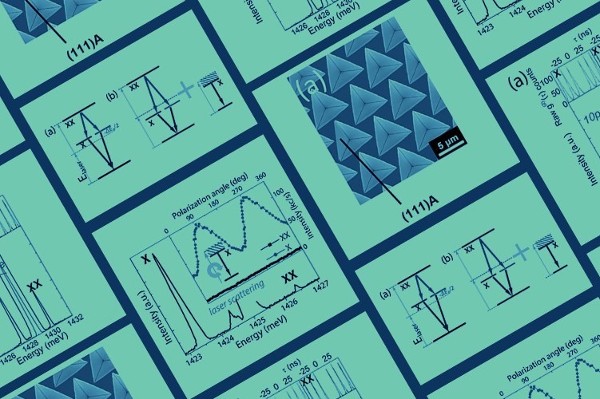
Every day, in collaboration with our industry partners worldwide, Tyndall is focused on delivering real impact from our excellence in research.
Today we have Quantum researchers developing the theories and computational models of tomorrow, producing the materials, engineering the devices and building applications to enable our quantum future.
Recently in the lead-up to the exciting launch of our new Quantum Computer Engineering Centre (QCEC) at Tyndall, we showcased some prime examples of our quantum research that has helped to position Ireland for the quantum opportunity. Read on to discover more.
Quantum Key Distribution on networks for fast and reliable broadband since 2011
One of the consequences of the Covid-19 pandemic is an accelerated move online, emphasising the need for fast and reliable broadband throughout the country. Tyndall Researchers have been playing a leading role in this endeavour for over a decade developing the type of fibre-to-the-home (FTTH) networks that are currently being rolled out under the National Broadband Ireland plan.
As early as 2011, in research entitled ‘Quantum Information to the home’ co-authored by Prof. Paul Townsend, Head of Photonics and Director at the SFI Irish Photonic Integration Centre, demonstrated that the integration of quantum and classical information on FTTH networks was possible by performing quantum key distribution (QKD) on a network whilst simultaneously transferring conventional classical data. Their novel patented scheme involved synchronously interleaving a channel of quantum data with the Raman-scattered photons from a classical channel, exploiting the periodic minima in the instantaneous crosstalk to enable secure QKD and hence to facilitate secure encryption of the classical channels.

Quantum Dots at the core of world-changing technology quantum computation
Quantum dots are tiny bits of semiconductor material. When properly designed, they emit light in the smallest possible portions called photons. The character and behaviour of these photons can be described by very unusual quantum mechanics laws: they act as particles, they create inseparable entangled objects. These properties are at the core of an emerging, world-changing technology of quantum computation.
For practical applications, quantum dots must meet a number of strict requirements. Despite enormous progress in the field, challenges remain, like that of the deterministic control of positions of multiple, and most importantly, high quality quantum dots.
In a research study conducted by researchers from Tyndall entitled ‘Biexciton initialization by two-photon excitation in site-controlled quantum dots: The complexity of the antibinding state case’, the team - Gediminas Juska, Iman Ranjbar Jahromi, Francesco Mattana, Simone Varo, Valeria Dimastrodonato, and Dr Emanuele Pelucchi, demonstrated, for the first time, resonant initialization of a biexciton state by a very pure two-photon excitation process in pyramidal site-controlled quantum dots.
This showed that this state can be used to generate polarization-entangled photons – a resource for quantum applications.

Potential for photonic quantum technologies as quantum light sources
GaAs quantum dots (QDs) have recently emerged as state-of-the-art semiconductor sources of polarization-entangled photon pairs (essential for optical quantum information processing), however, without site-controlled capability, this reduces their appeal for scalable integrated technologies.
In a research study entitled ‘Optical properties and symmetry optimization of spectrally (excitonically) uniform site-controlled GaAs pyramidal quantum dots’ conducted by researchers from Tyndall and Sapienza Università di Roma, a systematic study of epitaxially grown GaAs/AlxGa1-xAs site-controlled pyramidal QDs possessing unrivaled excitonic uniformity (in comparison to their InGaAs counterparts or GaAs QDs fabricated by other techniques) is explored. This research demonstrates the potential for photonic quantum technologies such as quantum cryptography and computing of our renewed site-controlled QD system (GaAs in AlGaAs) as quantum light sources compared to earlier generations.
_uniform_site-controlled_GaAs_pyramidal_quantum_dots.jpg)
Quantum applications utilizing new photon sources
Direct band gap light emitters that can be readily implemented within Si fabrication technology are heavily sought after to push optoelectronic data transmission to the inter-and intrachip level. The prospect of quantum applications utilizing new photon sources in the telecom regime would enhance the field of quantum cryptography.
In this paper entitled ‘Light emission from direct band gap germanium containing split-interstitial defects’, the team propose a different pathway to direct band gap emission from a Ge crystal lattice that is supersaturated with Ge atoms and thus forms point defects in the form of split-[110] interstitials surrounded by crystal distortions. The proposed approach has a high potential for applications as it's technologically feasible by combining epitaxial growth and ex-situ ion implantation.
The team further explore other elements such as Sb and Sn. The addition of these ions, together with quantum confinement, allow the convenient tuning of the emission wavelength from the telecom wavelength region to the midinfrared, opening applications in gas sensing.

Tyndall, through deep-tech research and our ability to work from Atoms to Systems has established our Quantum Computer Engineering Centre (QCEC) to realise the revolutionary potential of quantum science, connecting the theory to engineering. It’s an exciting time to join us at Tyndall, find out more about our immediate quantum research opportunities here.
